
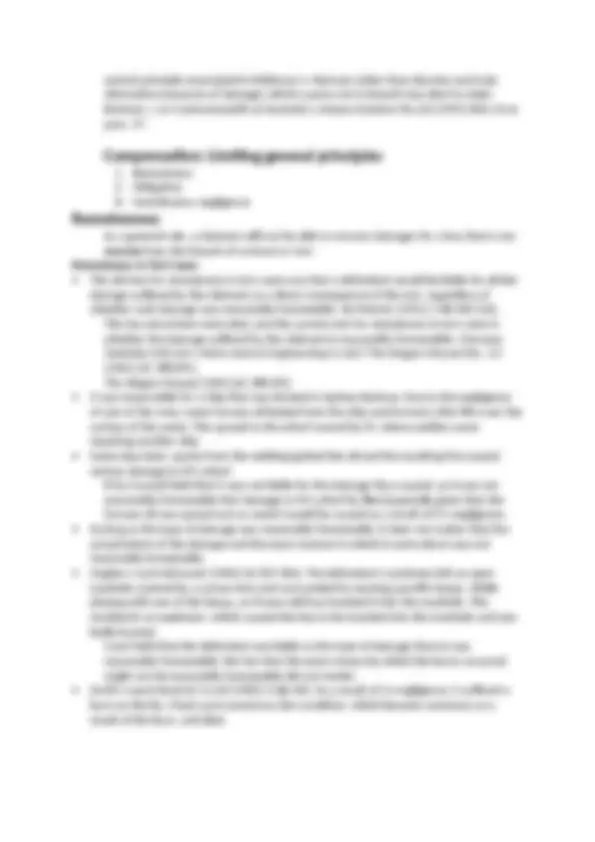
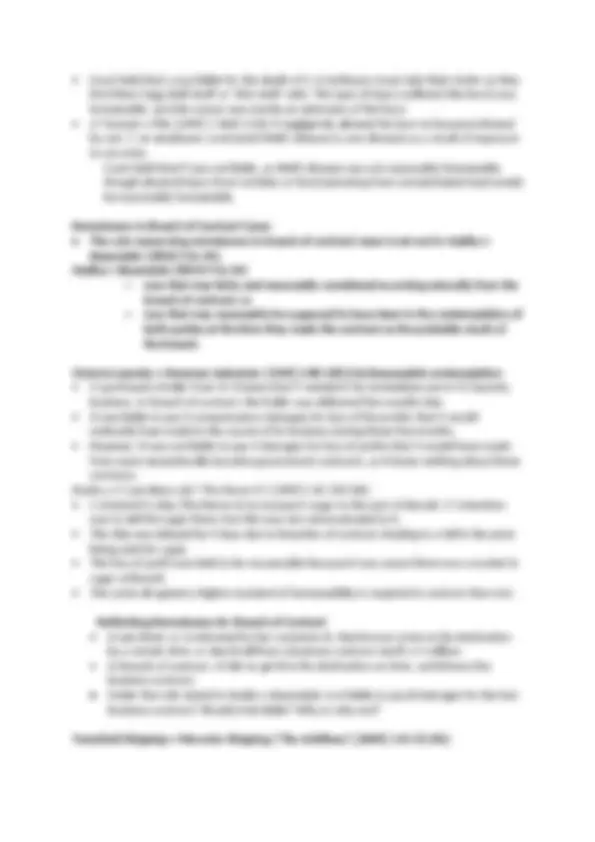
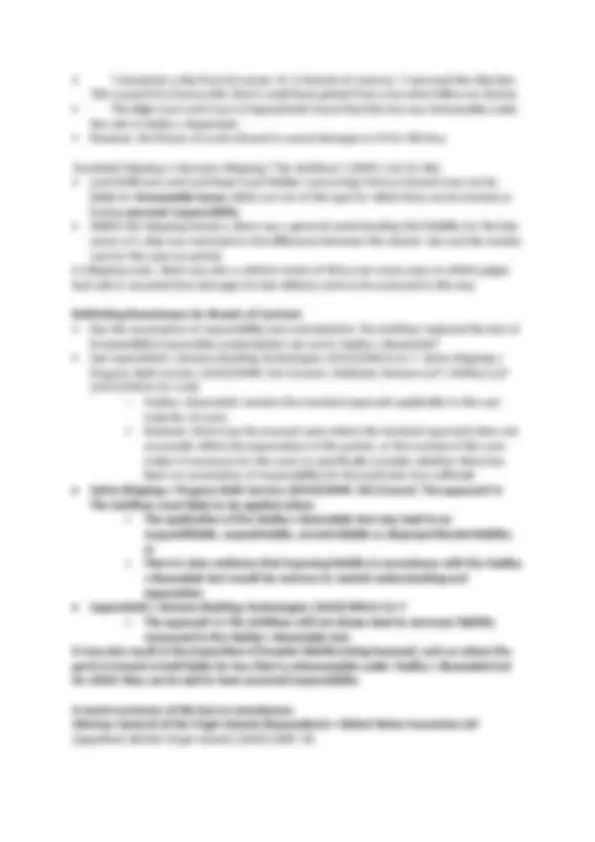
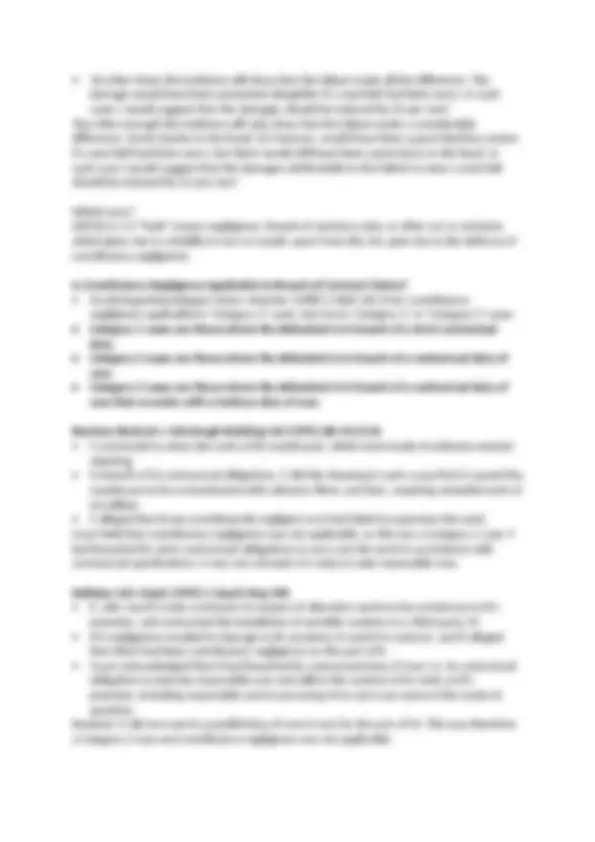
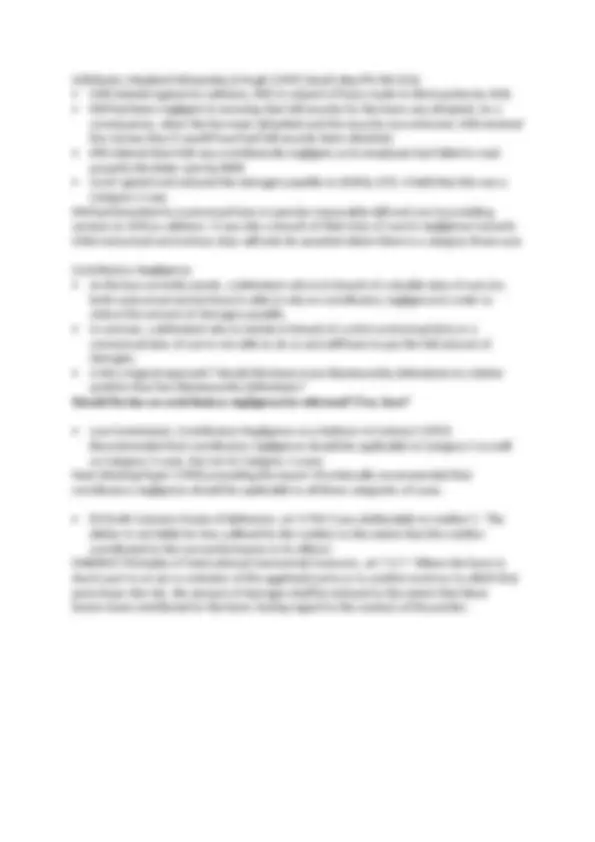
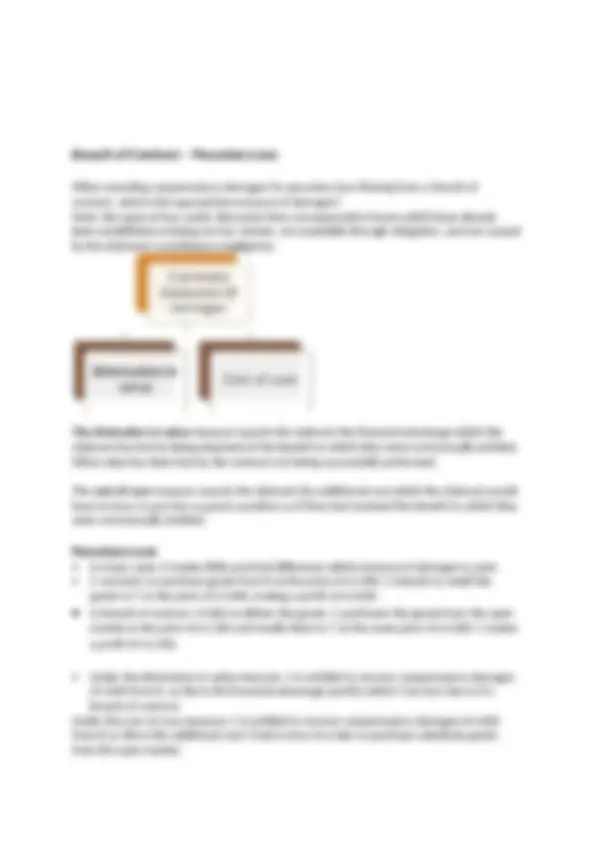
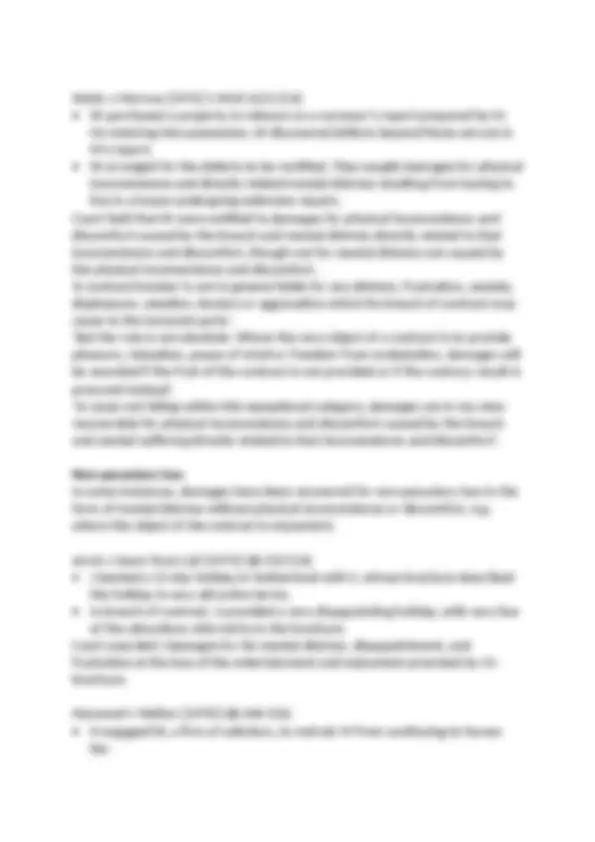
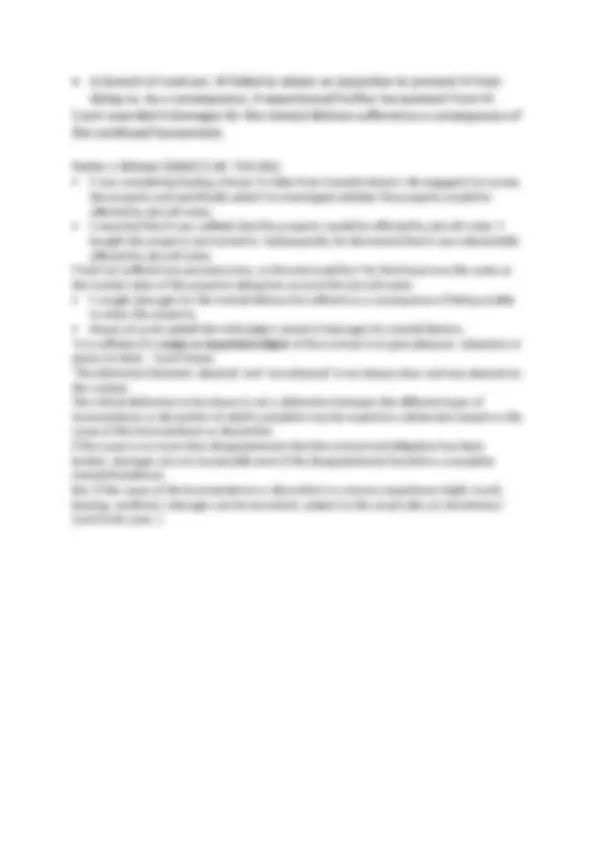


Study with the several resources on Docsity

Earn points by helping other students or get them with a premium plan


Prepare for your exams
Study with the several resources on Docsity

Earn points to download
Earn points by helping other students or get them with a premium plan
Community
Ask the community for help and clear up your study doubts
Discover the best universities in your country according to Docsity users
Free resources
Download our free guides on studying techniques, anxiety management strategies, and thesis advice from Docsity tutors
The primary remedy for achieving compensation in both contract and tort is damages. It outlines the general principles of compensatory damages, including the aim of putting the claimant in the same position as if the contract had been performed. The document explores the concepts of 'reliance damages' and 'expectation damages', and examines the rules of remoteness in tort and contract cases. It also discusses the role of contributory negligence in reducing damages and the various measures of damages for pecuniary and non-pecuniary loss.
Typology: Study notes
1 / 14

This page cannot be seen from the preview
Don't miss anything!









What is a remedy? ‘… The relief that a person can seek from a court’ (Burrows, 2019, p.3) ‘…the rights immediately arising from certain judicial commands and statements which aim to redress a pre-suit grievance’ Zakrezewski ‘Remedies Reclassified (2005. p.2) Why are remedies important? ‘Remedies are the vital element in shaping, moderating and at times extending the substantive rules under which we live: and we must always remember that legal advice is, at bottom, simply advice as to the remedy likely to be available (or unavailable) to the client.’ Tettenborn, ‘Remedies: A Neglected Contribution’ (1999, p.41)
- Types of remedies
- Court held that L was liable for the death of S. A tortfeasor must take their victim as they find them (‘egg shell skull’ or ‘thin skull’ rule). The type of injury suffered (the burn) was foreseeable, and the cancer was merely an extension of the burn.
Banco de Portugal v Waterlow & Sons Ltd [1932] AC 452 (HL)-where the claimant did something that incurred additional expenses.
When awarding compensatory damages for pecuniary loss flowing from a breach of contract, what is the appropriate measure of damages? Note: the types of loss under discussion here are expectation losses which have already been established as being not too remote, not avoidable through mitigation, and not caused by the claimant’s contributory negligence. The diminution in value measure awards the claimant the financial advantage which the claimant has lost by being deprived of the benefit to which they were contractually entitled. What value has been lost by the contract not being successfully performed. The cost of cure measure awards the claimant the additional cost which the claimant would have to incur to put into as good a position as if they had received the benefit to which they were contractually entitled.